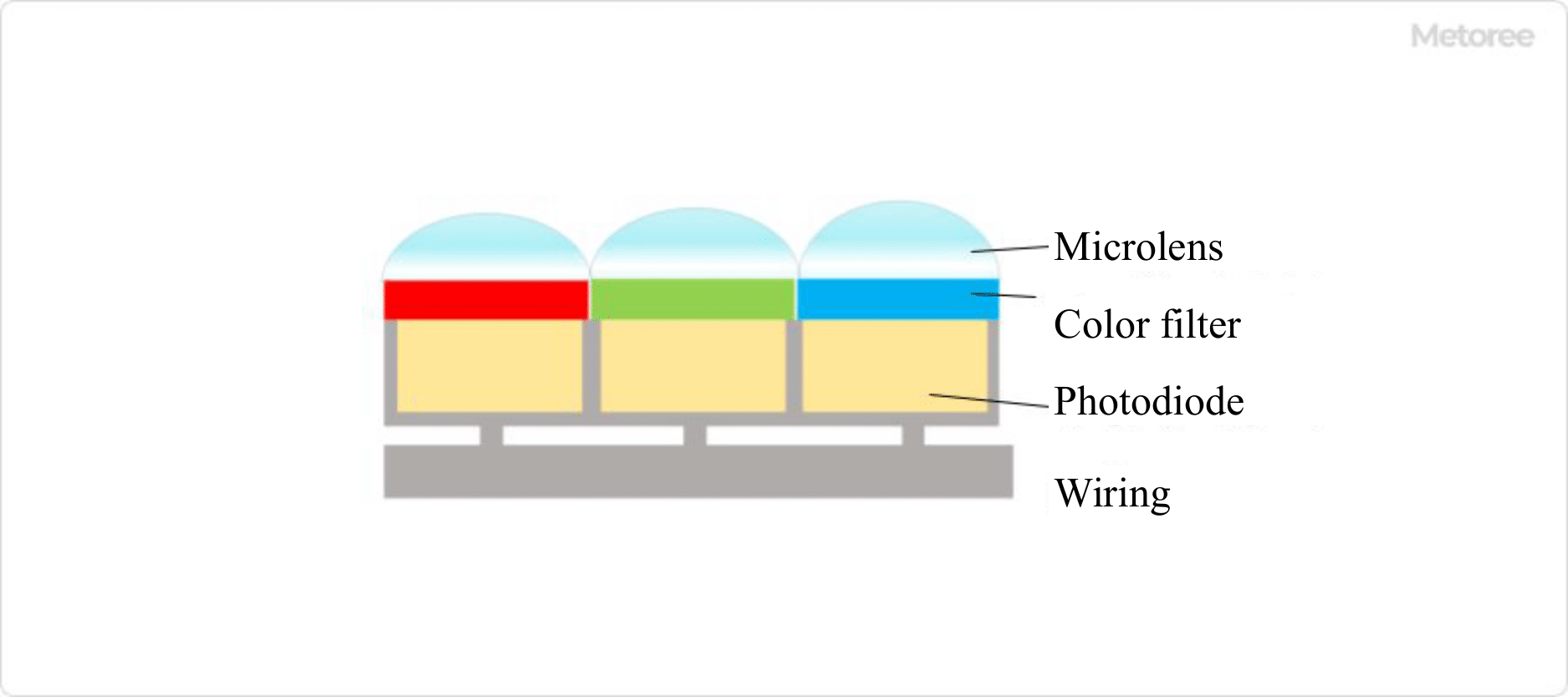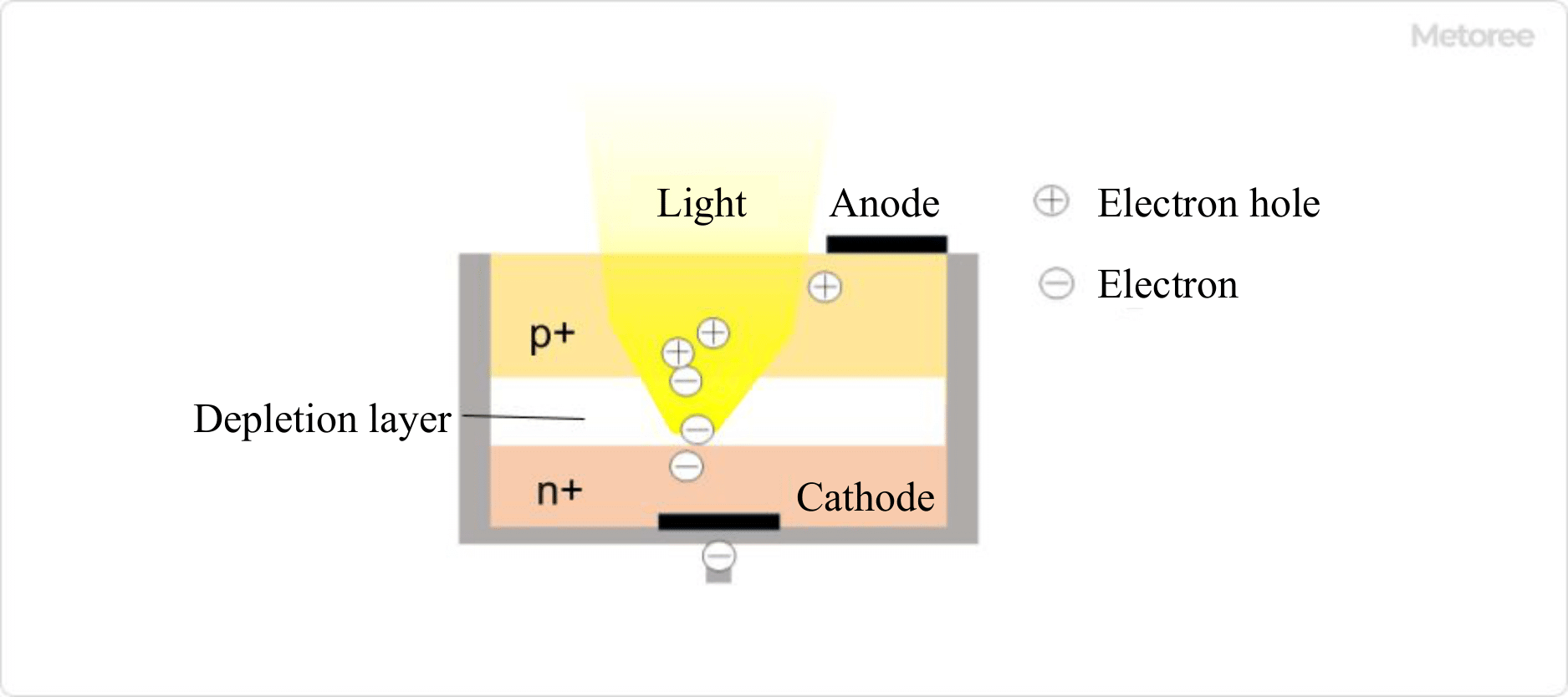All Categories
History









This section provides an overview for ccd detectors as well as their applications and principles. Also, please take a look at the list of 9 ccd detector manufacturers and their company rankings. Here are the top-ranked ccd detector companies as of January, 2026: 1.DataRay Corp., 2.BaySpec, Inc., 3.AZoM.
Table of Contents
Categories Related to CCD Detectors
1975~1995: Worked at Hitachi, Ltd.
Engaged in research on the irradiation effects of nuclear reactor materials at the Energy Research Institute.
Received the Japan-American Atomic Energy Society Award for his research achievements.
1996~2015,
Engaged in soft error research caused by environmental neutron beams in semiconductor devices at the Institute of Industrial Science.
Research achievements: Awarded the IEEE Fellow and the Teiichi Yamazaki Award.
Currently active as a writer.

Figure 1. Top view of CCD sensor
A CCD detector (Charge-Coupled Device sensor) is a semiconductor device that converts light intensity into electrical charge as a charge-coupled device.
CCD detectors are a type of image sensor (sometimes called CCDs) and were the dominant type until 2004 when they were surpassed by CMOS sensors in terms of the number of shipments.
They consist of a large number of elements called pixels arranged in a grid pattern as shown in Figure 1. The number of pixels in a camera refers to the number of these elements, using the unit of pixels. In practice, the number is usually in the millions of pixels.
Pixels transmitting the three primary colors of light, red, green, and blue (RGB) or their complementary colors cyan, magenta, yellow, and green (CMYG), are arranged in a mosaic-like pattern, and each pixel is transmitted in turn vertically and horizontally, and the signal is amplified by an amplifier and transmitted as image data. This sequence of operations is often referred to as a bucket relay. In Figure 1, the wiring is shown as if it were next to the pixel, but in reality, the wiring section is located below the pixel. (See Figure 2)
While CMOS sensors are the mainstream in cameras, video cameras, and scanners, CCD detectors are often used in many popular digital cameras, astronomical telescopes, and microscopes because of their superior sensitivity in long exposures.
In recent years, CCD detectors are increasingly being used in the built-in cameras of cell phones. These light detectors are used in many fields, including light intensity measurement, image measurement, DVD pickups, and optical signal detection in optical communications.
When the depletion layer of a photodiode receives light, an electron-hole pair is formed inside. This is called the photoelectric effect. As the intensity of light increases, the amount of charge stored increases. The phenomenon in which a voltage corresponding to the intensity of light is generated by exposure to light is called the photovoltaic effect.
CCD detector is thus responsible for converting the intensity of light into an electrical signal.
As shown in Figure 2, a CCD detector consists of a light-collecting lens on the incident side, a filter that transmits light of a specific wavelength, and a photodiode with layers of p-type, n-type, and i-type semiconductors, mainly made of silicon, sandwiched between metal electrodes (cathode and anode) on the top and bottom.
Microlenses are placed on the top surface of each pixel to focus light. They are also called on-chip microlenses because they are formed on wafers using glass or resin materials in the same way as semiconductor devices.

Figure 2. Conceptual diagram of CCD sensor pixel cross-sectional view
Color filters are formed on thin glass substrates with a color resist film that selectively transmits light in a specific wavelength range, allowing red (R, 640~770nm), green (G, 490~550nm) and blue (B, 430~490nm) light to enter the photodiode directly below. The light is then incident on the photodiode directly below it. A thin black partition called a black matrix is formed between the color filters to prevent the colors from mixing with each other. Because they are made on a semiconductor wafer in the same manufacturing process as semiconductors, they are also called on-chip color filters.

Figure 3. Conceptual diagram of photodiode structure and operation
A photodiode consists of a p-type semiconductor on the top (light-entering side) and an n-type semiconductor on the bottom, with an anode on the top and a cathode on the bottom.
*Including some distributors, etc.
Sort by Features
Sort by Area

BaySpec, Inc. is a designer and manufacturer of advanced spectral instruments founded in 1999. Based in San Jose, California, the company specializes in producing spectral sensing equipment including standard spectrometers for measuring chemical composition or molecular structure, mass spectrometers for measuring the mass-to-charge ratio of ions from various samples, and hyperspectral imagers for capturing spectral information in different wavelengths. BaySpec also offers custom OEM and ODM solutions, as well as technical support services for their clients in the fiber sensing, optical telecommunications, pharmaceutical and biomedical markets.

DataRay Corp., founded in 1988, is headquartered in Redding, California, USA, and is a manufacturer specializing in designing, developing, and producing beam profiling solutions for laser applications. The company's products enable precise measurement and analysis of laser beams, crucial for enhancing laser system performance in research, manufacturing, and medical fields. It has received awards such as the Photonics Media Innovators Award in 2015 and holds certifications like ISO 9001 for quality management. It serves a diverse global clientele, including research labs, universities, and advanced manufacturing facilities.

SRI Instruments, established in 1991 and headquartered in Torrance, California, USA, is a manufacturer of custom GC chromatography instruments. The company specializes in manufacturing chromatography instruments and accessories, offering a wide range of products such as data systems, detectors, and injectors. It is ISO 9001 certified, and its products provide benefits such as precise analytical capabilities, improved separation of chemical compounds, and enhanced research and testing processes. These instruments find applications across various industries, including pharmaceuticals, environmental analysis, food and beverage, and petrochemicals. It mainly serves accurate and optimal analysis of cannabis solutions.

Basler AG (Basler Group), founded in 1988 and a subsidiary of Basler Beteiligungs-GmbH & Co. KG, is a German manufacturer headquartered in Ahrensburg, Schleswig-Holstein, specializing in imaging components for computer vision applications. The company’s diverse product portfolio includes computer vision hardware, such as acquisition cards, cables, cameras, lighting tools, and lenses. It also offers network and peripheral devices, related accessories, and software solutions. The company supplies various digital industrial cameras, such as area scan, line scan, and network cameras, for applications in factory automation systems and intelligent transportation systems (ITS), as well as in sectors like life sciences, medical, and retail.

Hamamatsu Photonics K.K., established in 1953 and headquartered in Hamamatsu, Japan, is a manufacturer of sensors and emitters for both visible and invisible light. It stocks products like LEDs, lamps, and photodiodes used in several industries, including consumer electronics, dental imaging, and environmental monitoring. The sensor and light source components are also available as modules and units that can be incorporated into systems the company develops, like optical measurement systems or imaging systems. The ISO 9001-certified company stocks over 15,000 devices, units, and systems that ship to over 100 destinations worldwide, and it has ten research and production bases.

AMS Technologies AG is a German manufacturer of thermal management, photonics, and power technology products that was originally founded in 1982 as AMS Technologies GmbH before rebranding in 2007. Based in Munich, Bavaria, the company produces power technology systems such as resistors and capacitors, as well as optical components including spectrometers and fiber optics. It also offers thermal management solutions, such as vapor compression and liquid cooling systems for electronics or thermoelectrics. AMS Technologies operates internationally, with sales offices in France, Italy, Spain, and the UK. The company primarily serves clients in renewable energy, avionics, and nanotechnology R&D.

HORIBA RADIO LABORATORY was established in Japan in 1945 and has spent the last three-quarters of a century growing as an R&D company and engaged in international operations. HORIBA Scientific offers 200 years of experience developing high-performance scientific instruments and analytical solutions. The HORIBA Group of worldwide companies provides an extensive array of instruments and systems for applications ranging from automotive R&D, process and environmental monitoring, in-vitro medical diagnostics, semiconductor manufacturing, and metrology to a broad range of scientific R&D and QC measurements. Operating in Asia, Europe, and North and South America, HORIBA scientific develops solutions that go beyond just products.

Canon Marketing Japan Inc., a subsidiary of Canon Inc, founded in 1968, and based in Tokyo, Japan, is a distributor of Canon products and related solutions. The company offers a wide range of products including cameras, multi-function machine fax copy, printers, video cameras, and production printers among others. It also provides cloud services such as output management, document management, reporting, IT consulting, and much more. The company has won gold in the Vision Awards of 2010/2011 and was selected for the ‘Most Liked!’ IR Award at the 2022 IR Awards.

AZoNetwork UK Ltd., founded in Manchester UK, in 2000 is an online publication for Materials Science. The company's product portfolio includes encyclopedic articles which cover a range of Materials Science topics from the fundamentals, Editorial features that discuss recent industry developments, supplier profiles, and event listings. The company has a worldwide audience including researchers, engineers and scientists with the latest industry news, information and insights from the Materials Science industry.
Ranking as of January 2026
Derivation Method| Rank | Company | Click Share |
|---|---|---|
| 1 | DataRay Corp. |
19.4%
|
| 2 | BaySpec, Inc. |
17.8%
|
| 3 | AZoM |
10.9%
|
| 4 | SRI Instruments |
10.4%
|
| 5 | Basler |
10.4%
|
| 6 | AMS Technologies AG |
9.3%
|
| 7 | HORIBA |
9.3%
|
| 8 | Canon Global |
7.7%
|
| 9 | Hamamatsu Photonics K.K. |
4.9%
|
Derivation Method
The ranking is calculated based on the click share within the ccd detector page as of January 2026. Click share is defined as the total number of clicks for all companies during the period divided by the number of clicks for each company.Number of Employees
Newly Established Company
Company with a History
*Including some distributors, etc.
*Including some distributors, etc.
| Country | Number of Companies | Share (%) |
|---|---|---|
 United States of America
United States of America
|
3 | 33.3% |
 Japan
Japan
|
3 | 33.3% |
 Germany
Germany
|
2 | 22.2% |
 United Kingdom
United Kingdom
|
1 | 11.1% |
12 products found
12 products
Lucille Co., Ltd.
470+ people viewing
Last viewed: 13 hours ago
The multi-channel CCD/InGaAs detector is a highly sensitive detector developed for spectroscopic measurements. Select from various measurement wave...
Okaya Seiryu Kogyo Co., Ltd.
560+ people viewing
Last viewed: 38 minutes ago
We have adopted a line sensor method, which has an advantage over the area sensor method in terms of the number of pixels in the horizontal directi...